Perched high on a hill above the Tuscan countryside, Siena is about as picturesque as it gets. Winding cobblestone lanes open onto grand squares dotted with centuries old churches and monumental buildings. The splendid Duomo is probably the main attraction in town, but there are plenty of interesting things to do in Siena Italy, especially if you’re an art lover.
Many people spend just one day in Siena as part of a longer trip to Tuscany. And I can’t fault anyone for that as there are so many beautiful places in the region to explore. (Hi, Florence!) But if you have the time, a weekend is ideal for reveling in the city’s many charms. You can wander the alleyways at a more leisurely pace and enjoy some quiet moments in the mornings and evenings after the day-trippers have moved on.
Whether you have a few hours or a few days, here are the unmissable things to do in Siena Italy:
- Siena Duomo
- Cathedral Rooftop Tour
- Museo – Opera della Metropolitana
- Battistero di San Giovanni Battista
- Cripta del Duomo di Siena
- Santa Maria della Scala
- Pinacoteca Nazionale
- Palazzo Pubblico
Siena Duomo
The Siena Cathderal was built in the 1200s and is absolutely stunning. The intricate Romanesque facade is original to the building, and the sculptures are credited to Giovanni Pisano. Lovely as the outside is, the interior is on another level! Black and white striped columns support a vaulted ceiling painted blue with gold stars. The inlaid marble floor is a work of art in its own right, depicting epic scenes from the bible. It is definitely worth the entry price!
In a cathedral brimming with beauty, the Piccolomini Library is still a standout. It was added in the early 1500s to hold the private books of Pope Pius II. The colorful frescos covering the walls depict important events from his life.
Cathedral Rooftop Tour
I purchased a ticket that included access to the Siena Duomo rooftop, and I’m so glad I did. It was a moderate climb, compared to some others I’ve done, and the views are just superb. This area of the duomo is nicknamed “the gate of heaven” for a reason! At the time of writing, it’s only possible to climb to the roof on a guided tour.
You’ll have a great birds-eye view of the cathedral’s interior before getting to the roof. This is the best vantage point to admire the astonishing floor!
Museo – Opera della Metropolitana
Florence may be the birthplace of the Renaissance, but the Sienese School of painting that developed concurrently also had a big impact on Italian art. Duccio di Buoninsegna is considered one of the best artists of his generation. He created the altarpiece for the Siena Duomo as well as its stained glass rose window; both artworks are on display in the Cathedral Museum. You’ll also find an assortment of paintings, tapestries, reliquary, and the original statues from the cathedral facade.
A project to expand the cathedral in the 14th was halted mid-construction due to an outbreak of the plague and never restarted. One lone wall was left standing. If you plan to climb to the viewpoint atop the unfinished “New Cathedral Facade,” you’ll find the access point inside the museum. The line was much too long at the time of my visit, but at least I had the rooftop views to tide me over.
Battistero di San Giovanni Battista
The Baptistry of San Giovanni was added to the cathedral complex in the early 1300s. Its central baptismal font, made of marble and bronze and sculpted in part by Donatello, was sadly covered in scaffolding during my visit, but according to all reports is quite impressive. The frescos covering the walls were painted by Vecchietta in the mid-1400s and depict the Twelve Articles of Faith.
Cripta del Duomo di Siena
The crypt below the cathedral was part of the initial 13th century construction, but was only discovered in 1999 during a restoration project. Now fully excavated and restored, this subterranean space is a showcase for early Sienese painting. Nearly every surface is covered with scenes from the Old Testament, and the colors are surprisingly vibrant.
Santa Maria della Scala
During the Middle Ages, Siena Duomo was a stop on the pilgrimage route between Rome and Canterbury, England. A hospital was built directly across from the cathedral to care for the tired pilgrims. Today, the many chapels and frescoed halls comprise the Santa Maria della Scala museum complex. You could easily spend two hours wandering through the warren of interconnected rooms.
Pinacoteca Nazional
The National Art Gallery of Siena showcases the best art the city has to offer, including masterpieces by Duccio, Vecchietta, and Pietro Lorenzetti. In addition to highlighting the talent of local painters, the collection aims to illustrate the difference in styles that developed between Siena and Florence as the Renaissance blossomed.
Pinacoteca Nazional is housed in a 14th century palace with fantastic views of the city. Be sure to look out the windows!
Palazzo Pubblico
Siena’s Gothic Town Hall, or Palazzo Pubblico, is home to two of the city’s top attractions: Museo Civico and Torre del Mangia.
The Civic Museum is special for its frescos painted by Ambrogio Lorenzetti. If you’re thinking, yawn, more frescos, you might be pleasantly surprised by these. Since they were commissioned by the government instead of the church, they feature non-religious scenes, a rarity for the time. The most famous is “Allegories and the Effects of Good and Bad Government,” which was undergoing restoration at the time of my visit.
Torre del Mangia is the town hall’s spindly clock tower, which soars over the Siena skyline. Climbing the 400 steps to the top will take some advance planning, as a very limited number of visitors are permitted up every hour.
I was content to sip an Aperol Spritz in Piazza del Campo and admire the tower from ground level. This large square was originally a Roman-era marketplace and remains a central part of city life. Il Campo is also home to the famous Palio horse race, which takes place twice every summer.
If you’re wondering where to eat in Siena, look no further than Osteria degli Svitati. My dinner here remains one of my favorite meals in all of Italy! This cozy little restaurant serves up classic home-style Tuscan dishes like I imagine grandmothers have been doing for decades. There aren’t many tables, so reservations are a must!
I started with the surprisingly fresh bresaola salad, chock full of veggies, cheese, and seeds for a nutty crunch. For the pasta course I went with a satisfying cheese ravioli with pesto sauce. But the star was undoubtedly the meatballs in tomato sauce with a side of stewed cannellini beans. Proof that sometimes simpler is better.
For those planning to spend two days in Siena or longer, I recommend La Dimora dei Monaci. This charming B&B is tucked inside an 18th century palace that once belonged to the Monaci family. Rooms and the breakfast nook face a walled private garden and are blissfully quiet.
Siena is easy to reach from Florence by bus. Rides cost less than €10 and take about an hour and 15 minutes. Buses in Siena stop in the new town well below the historic center. To reach all the attractions mentioned above you can take a local bus or taxi, or use the public escalators. The entrance is opposite the bus stop. Note that one section of the escalator was out of service during my visit and I had to drag my suitcase up the stairs.
Ready to plan your trip to Tuscany?
Save this guide with the best things to do in Siena Italy for easy reference!
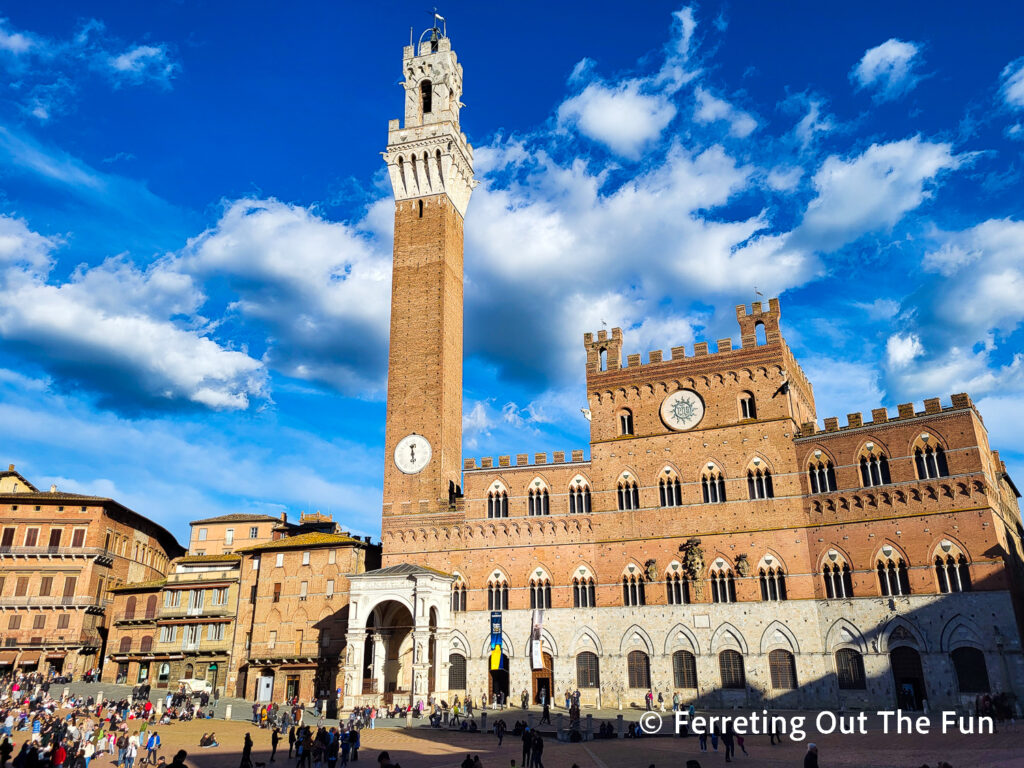
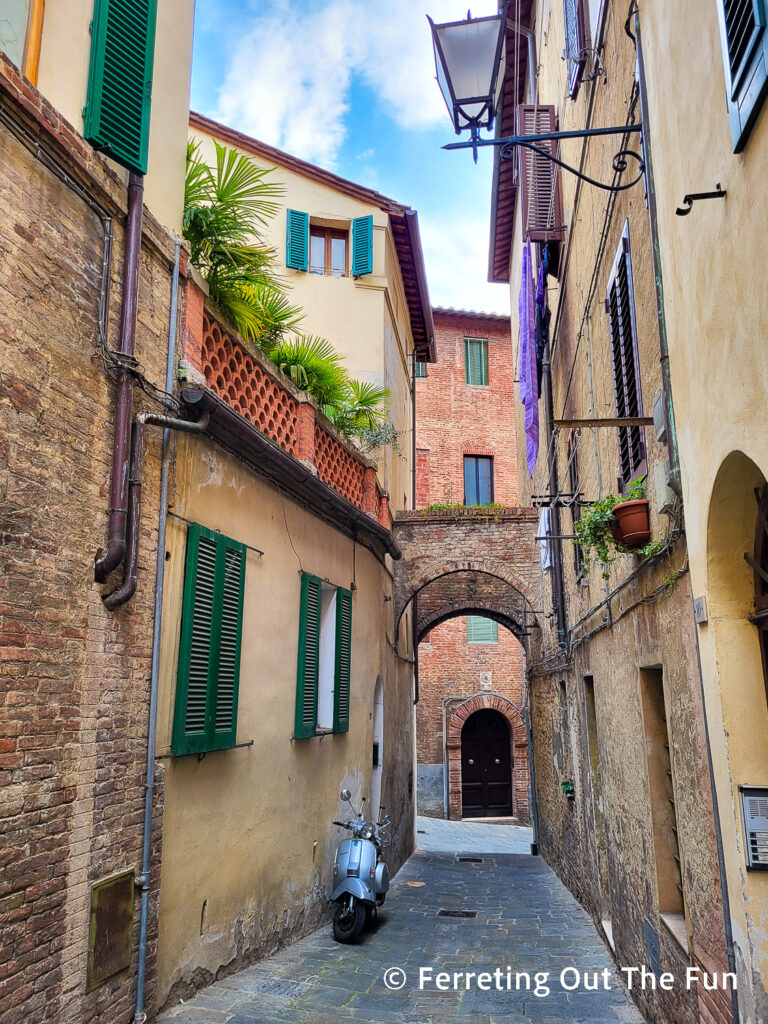
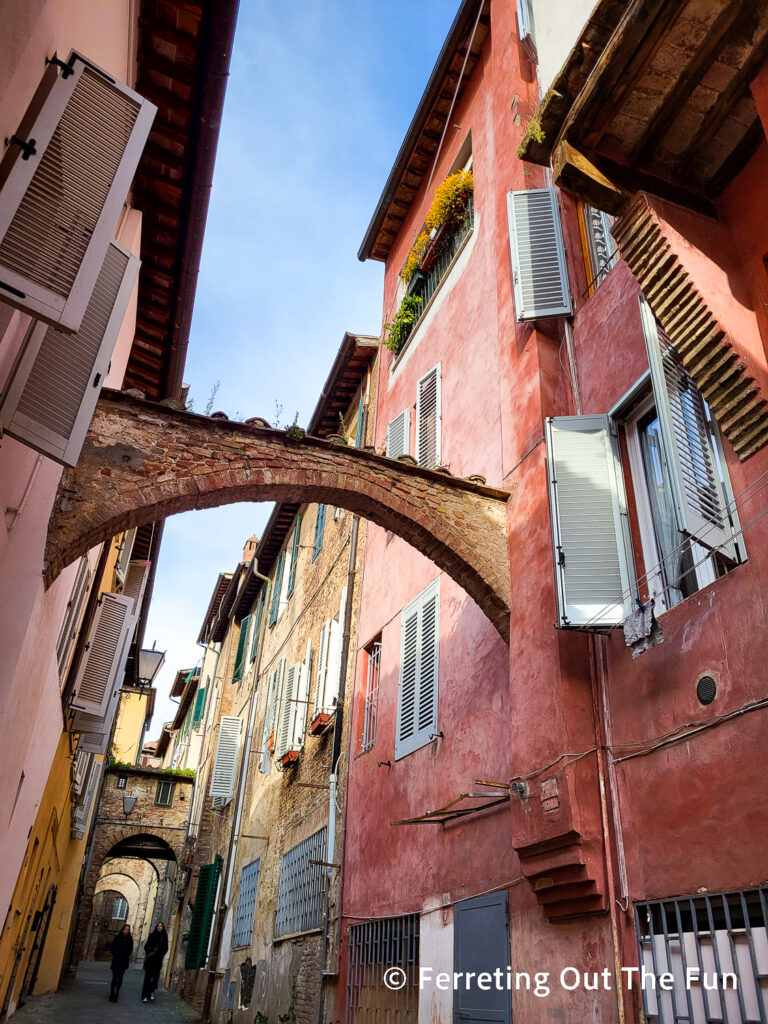
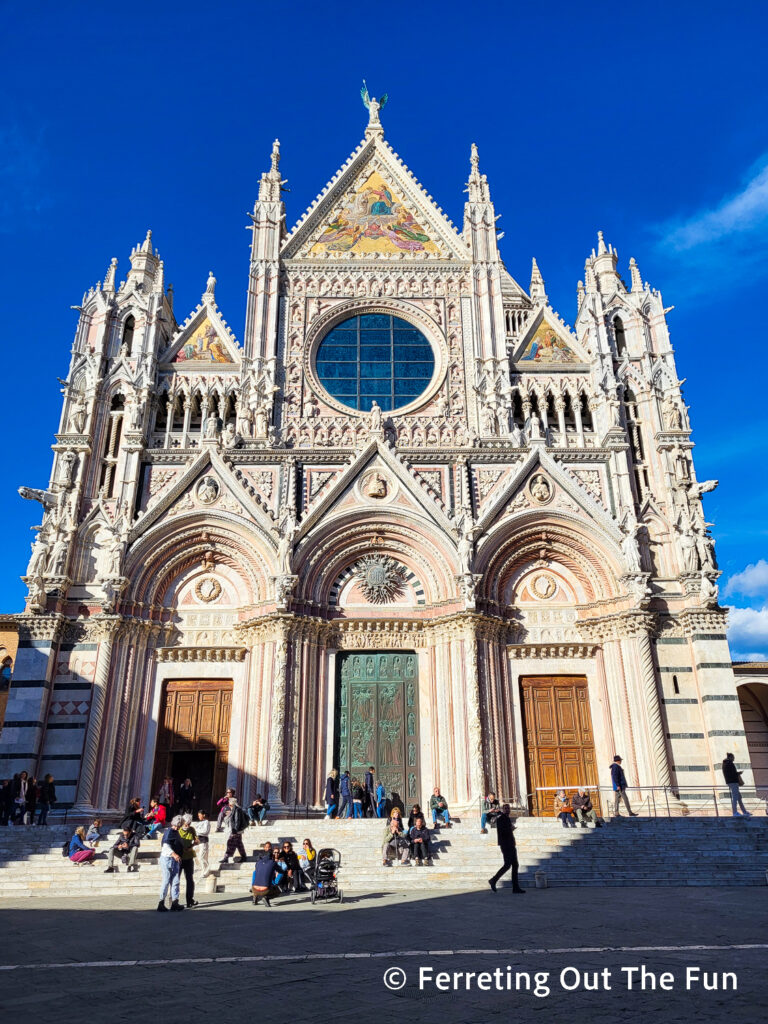
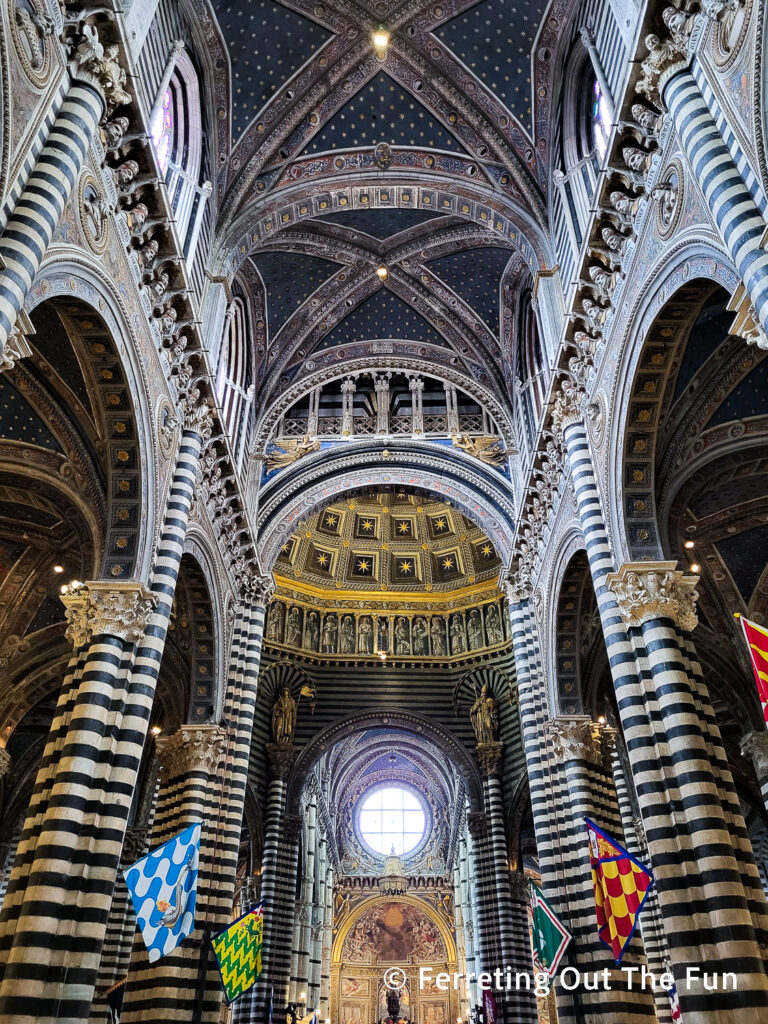
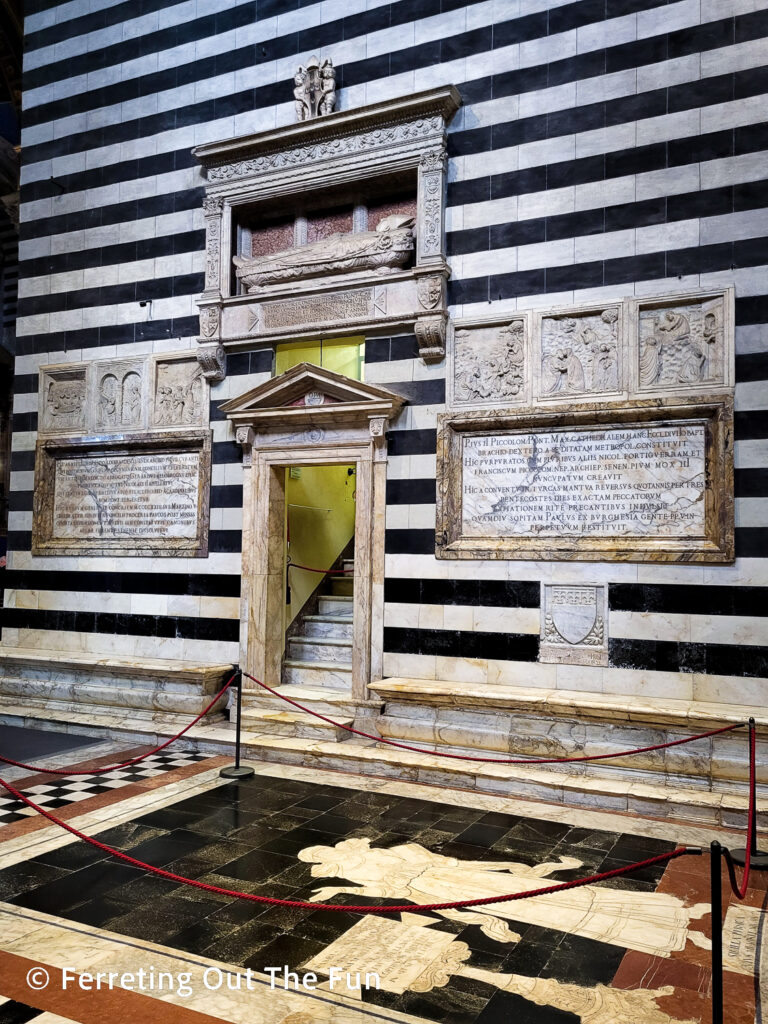
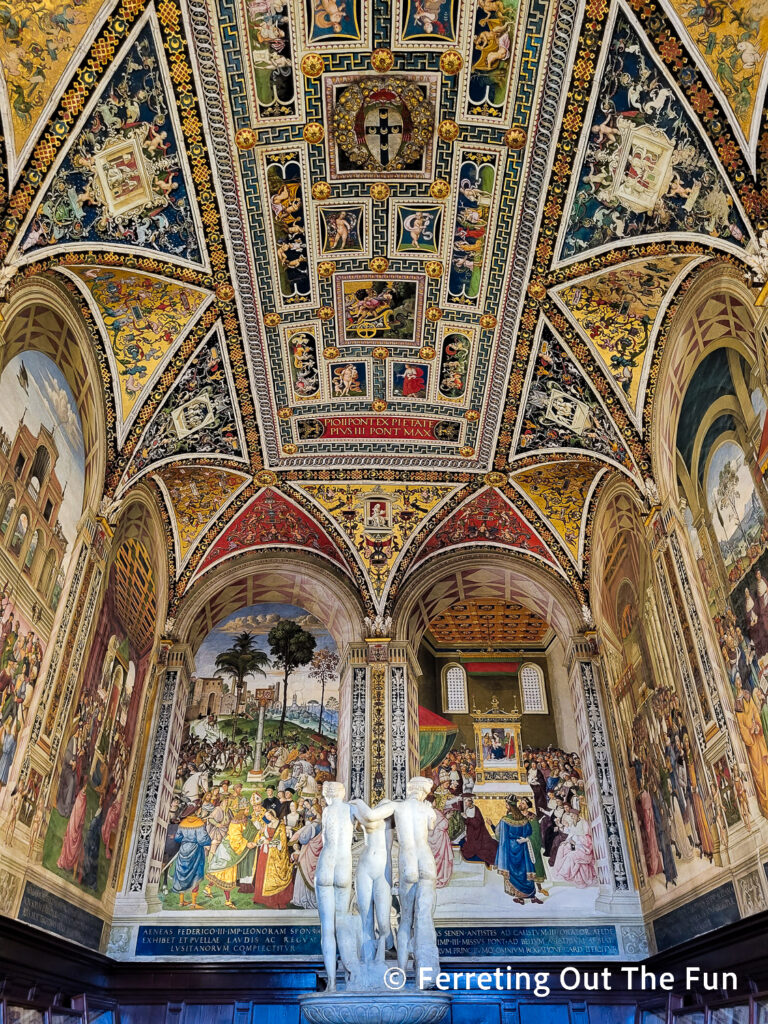
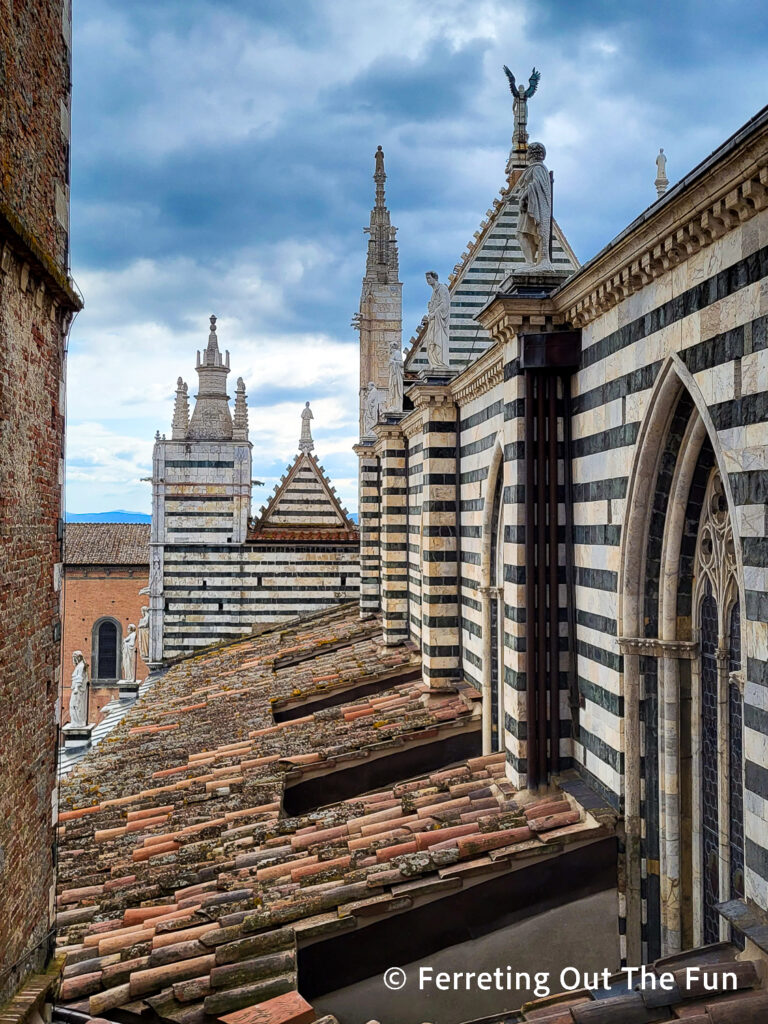
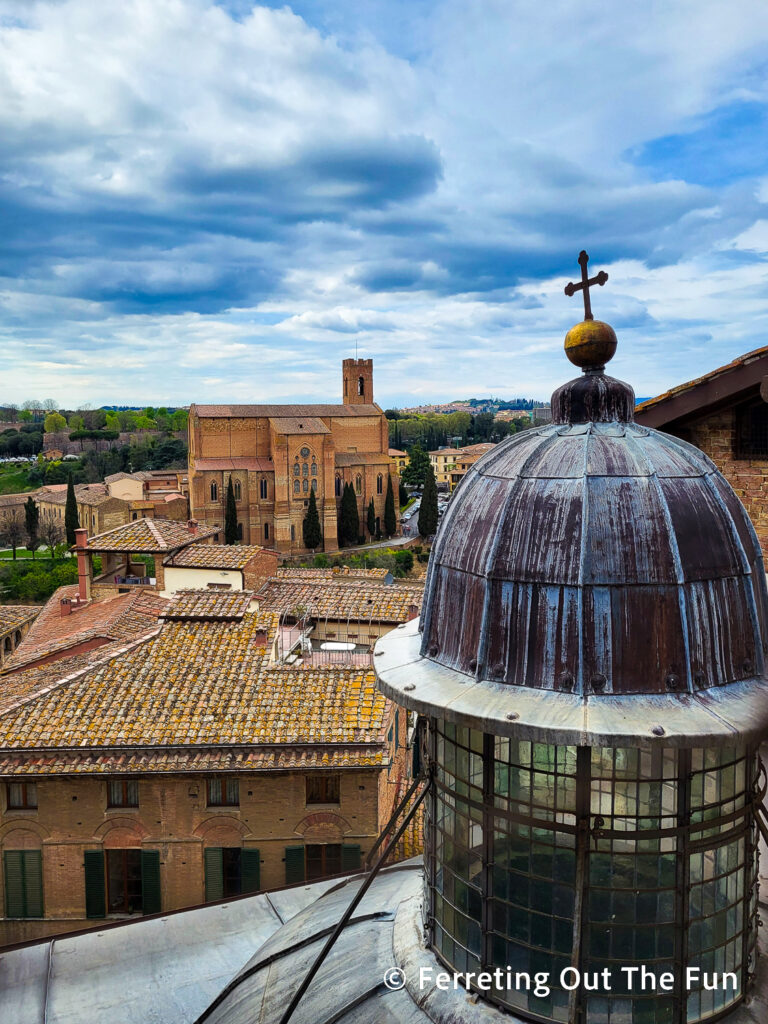

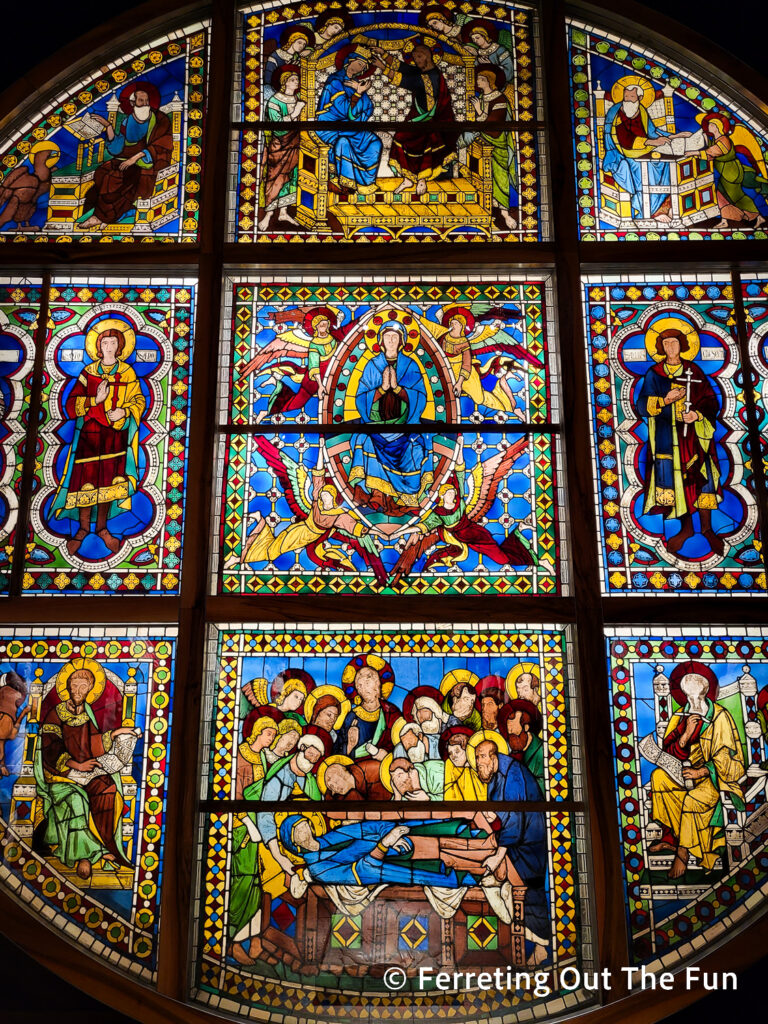
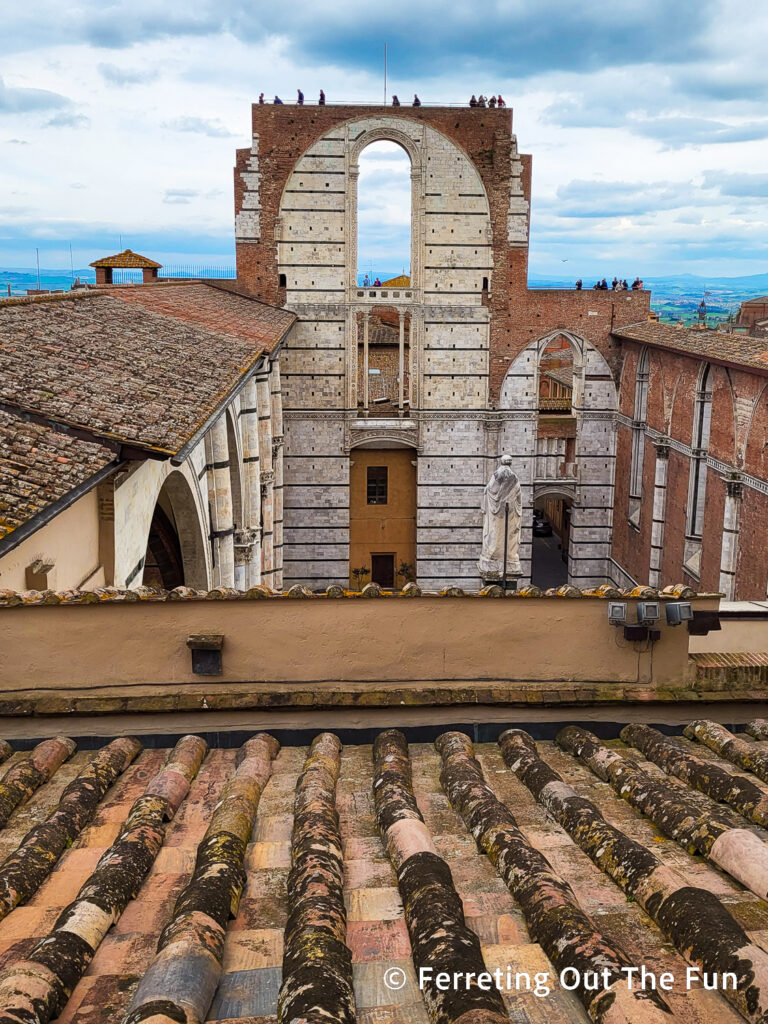
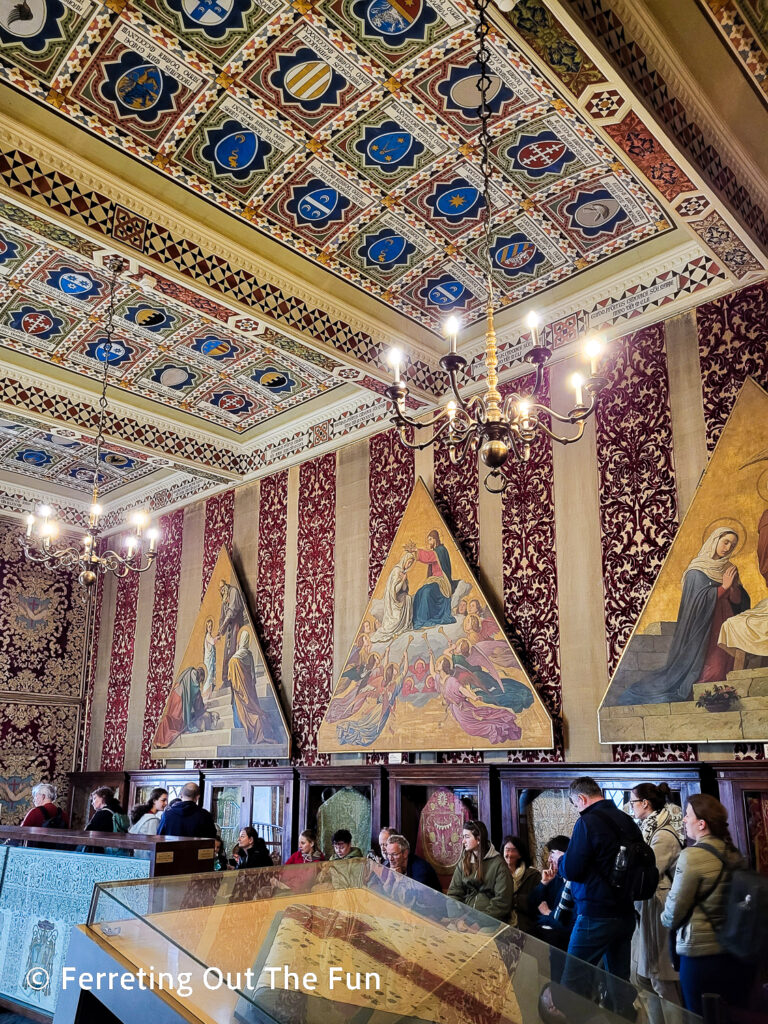
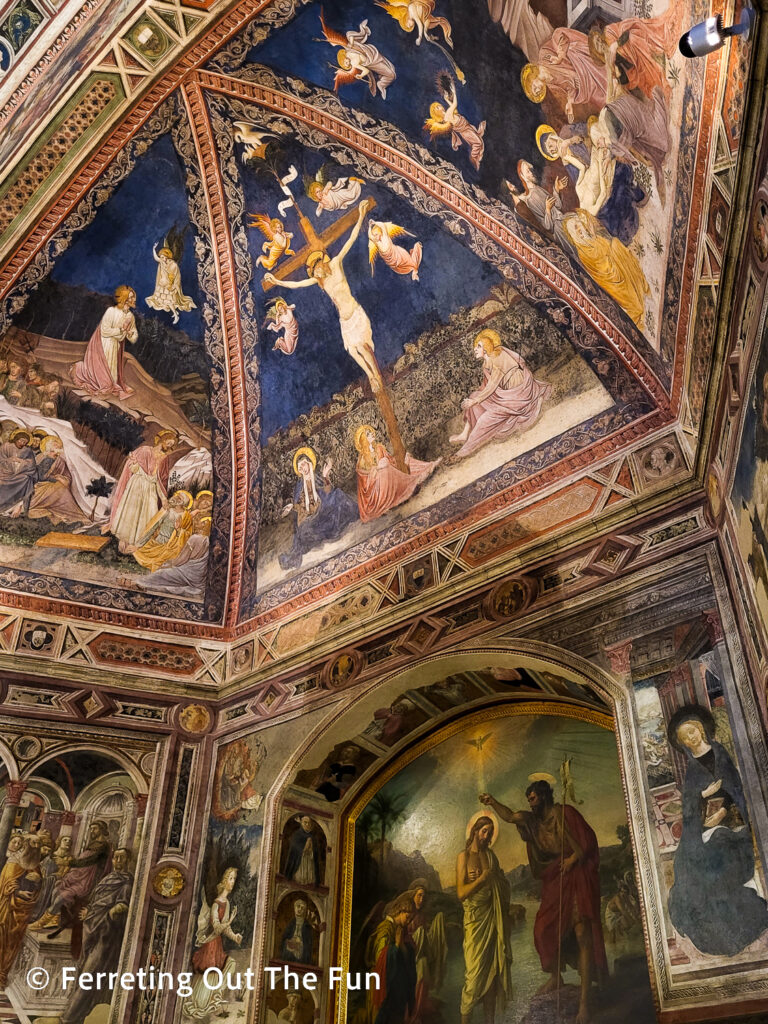
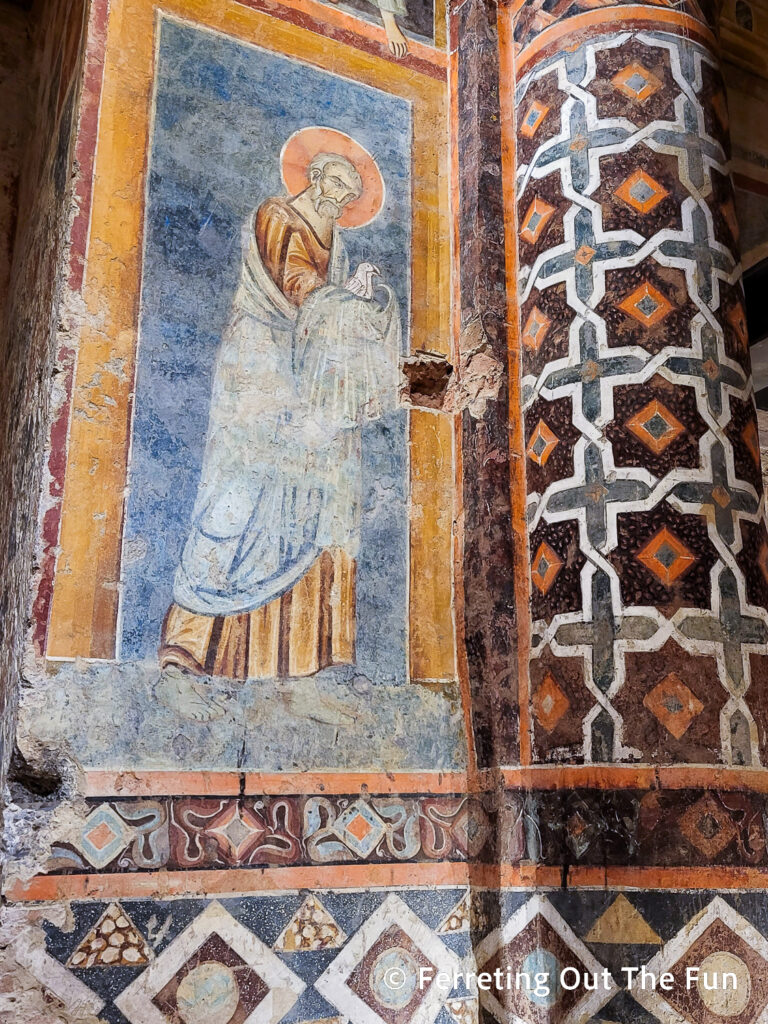
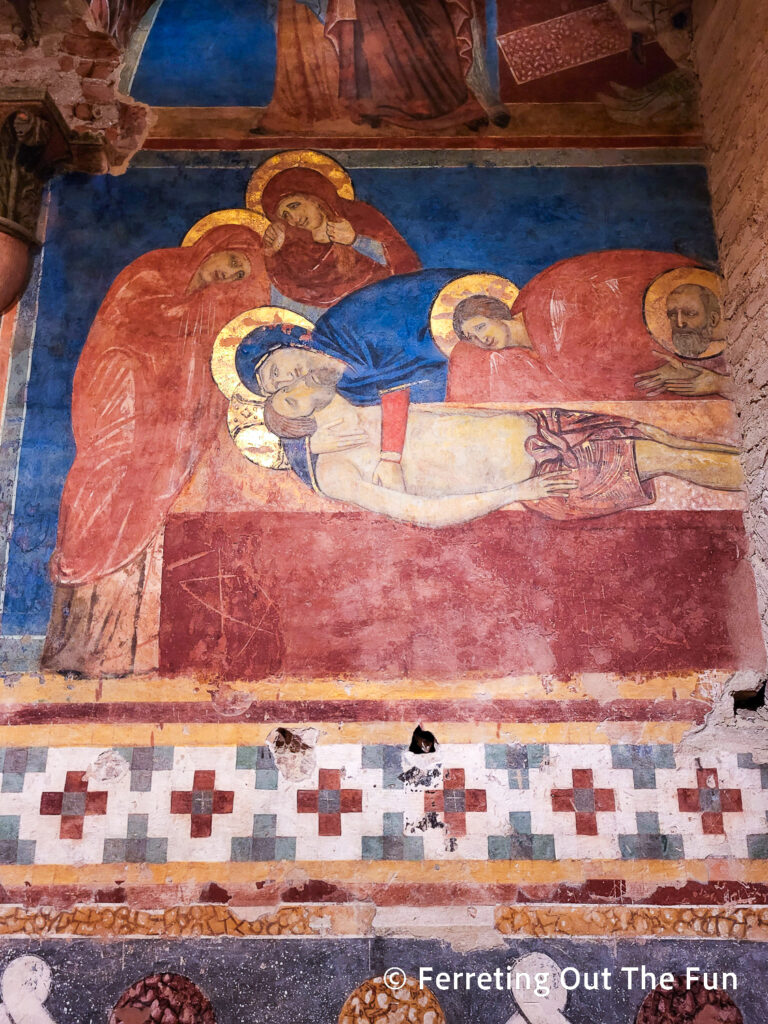
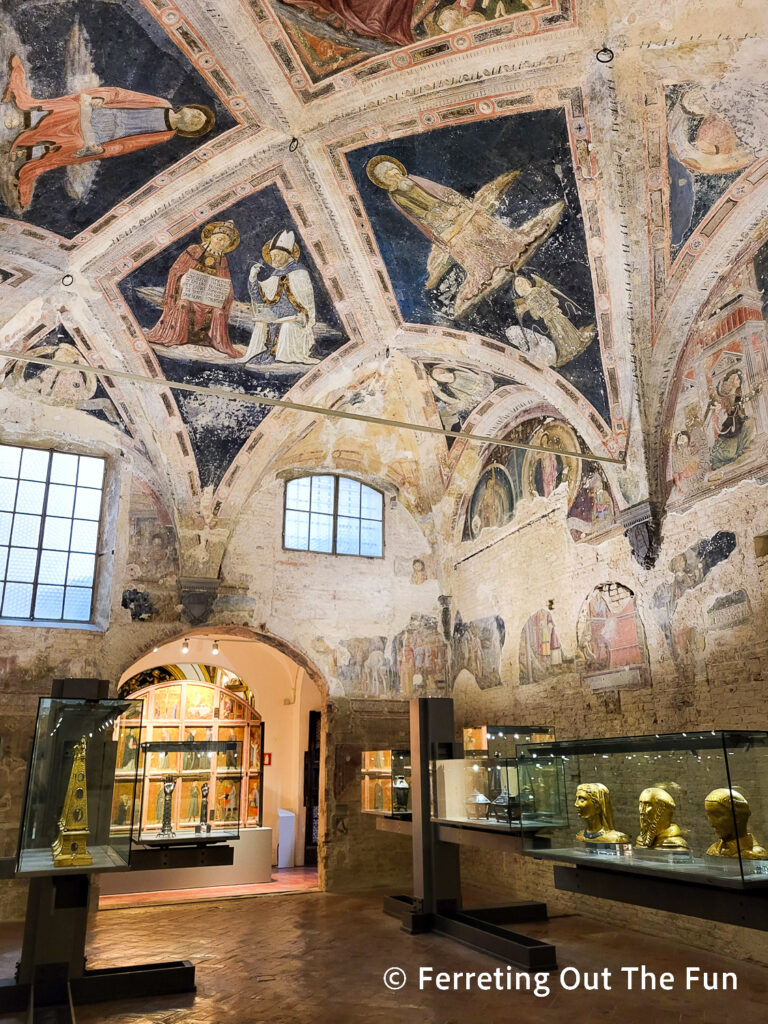
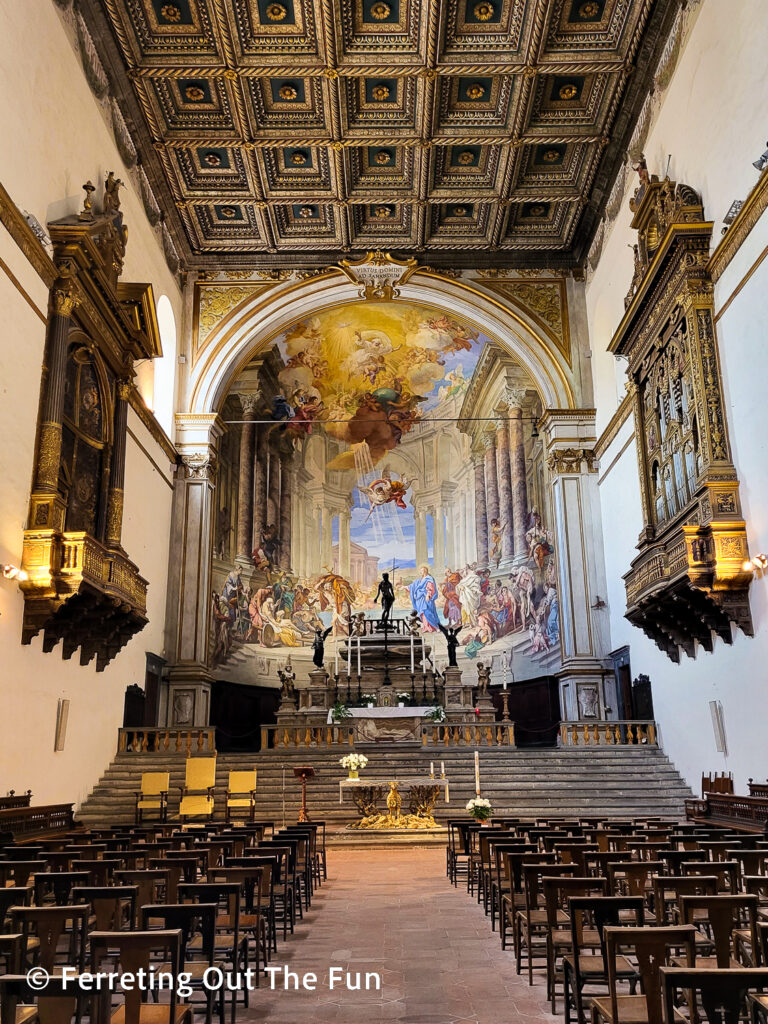
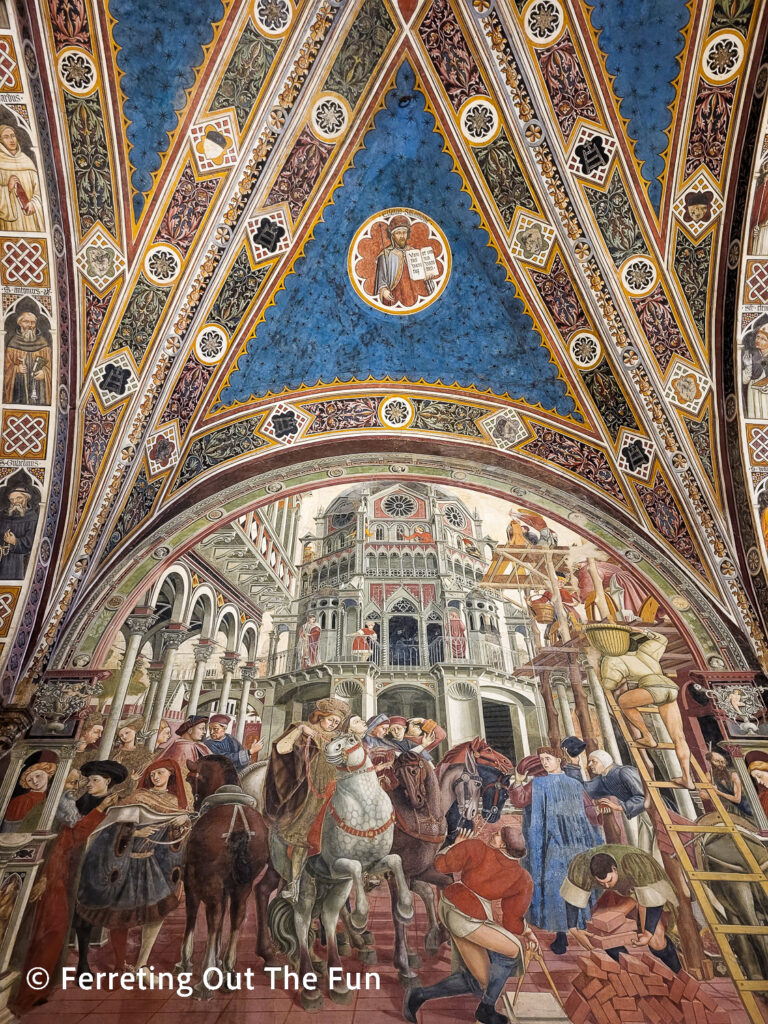
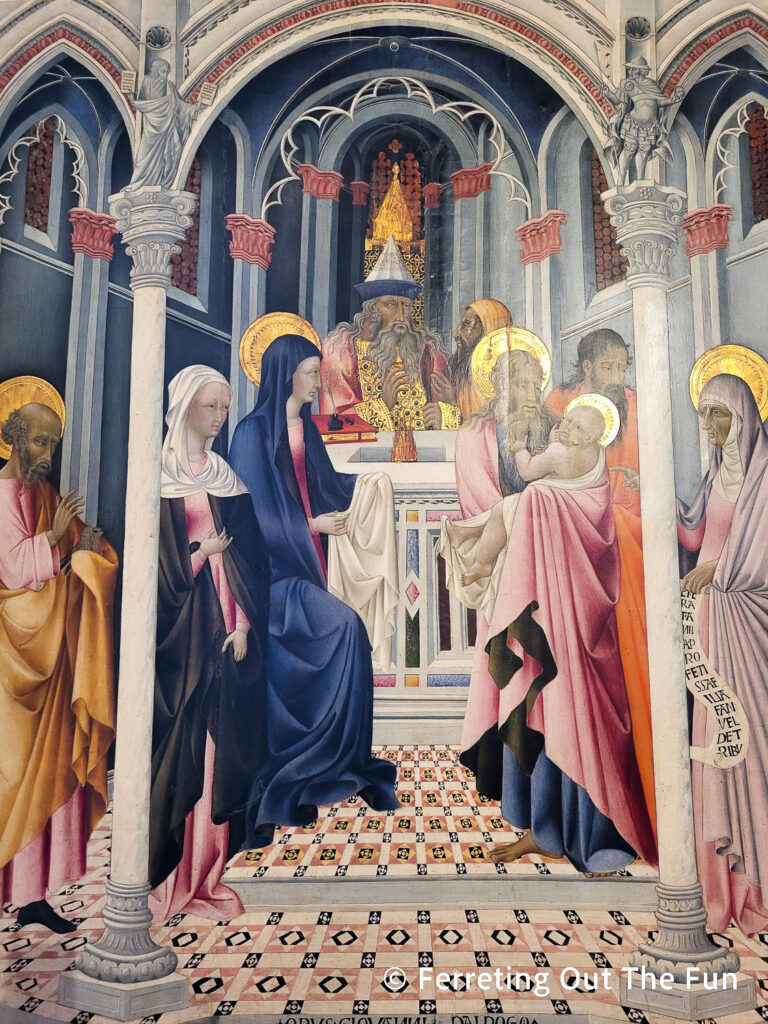

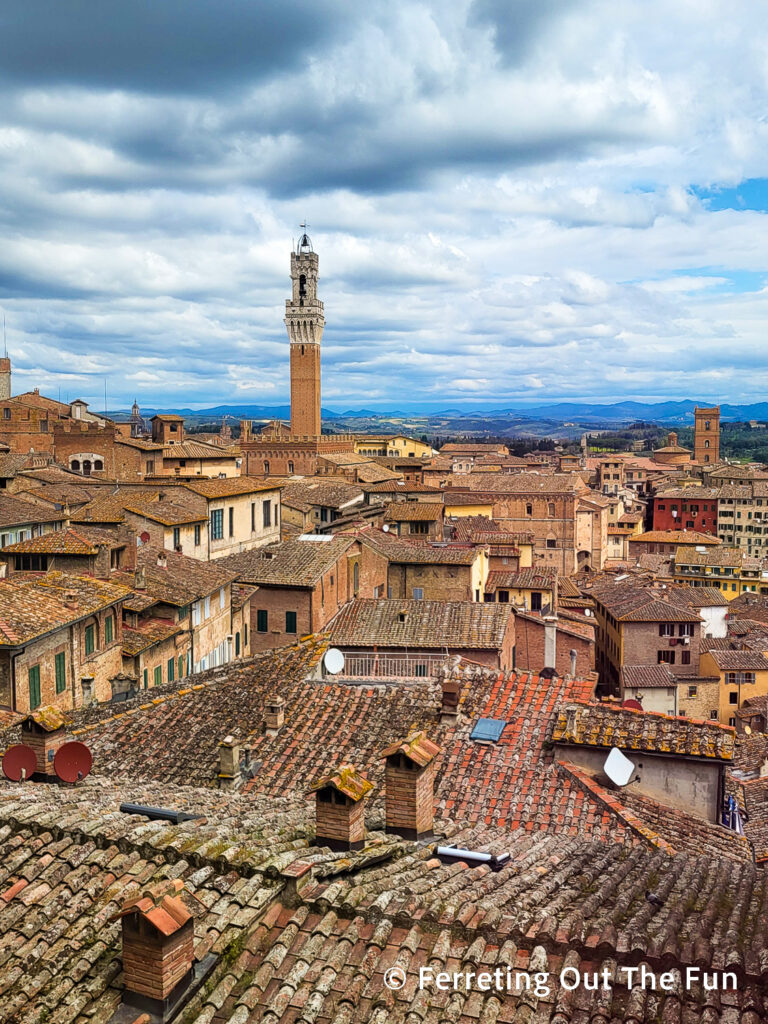
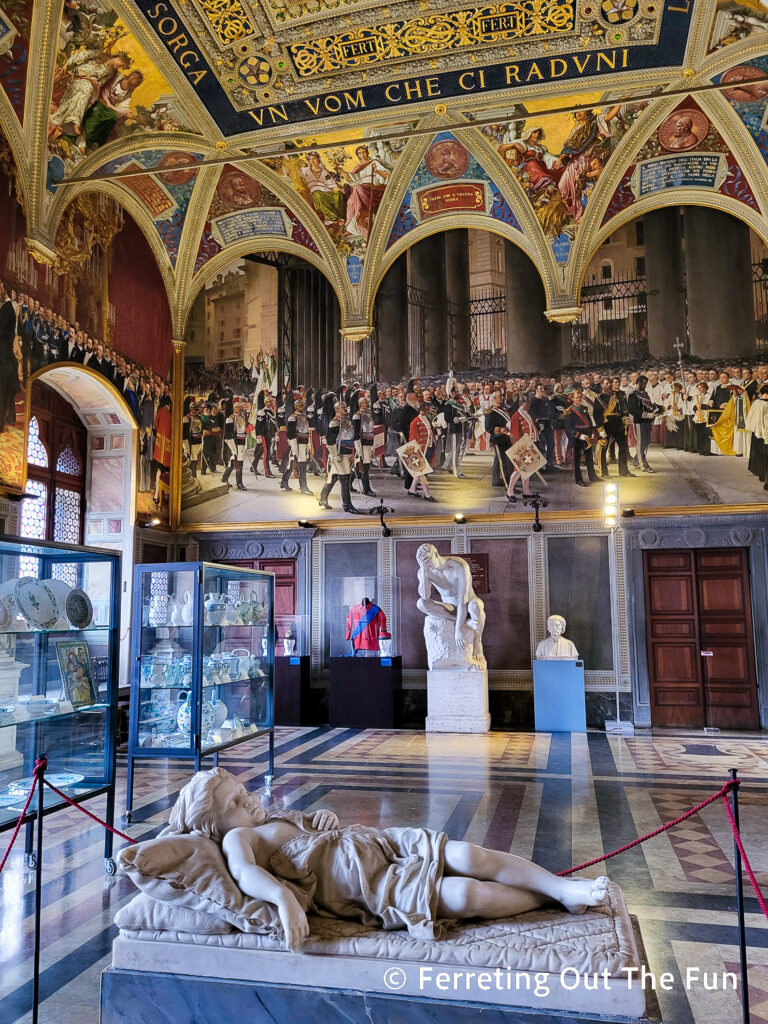
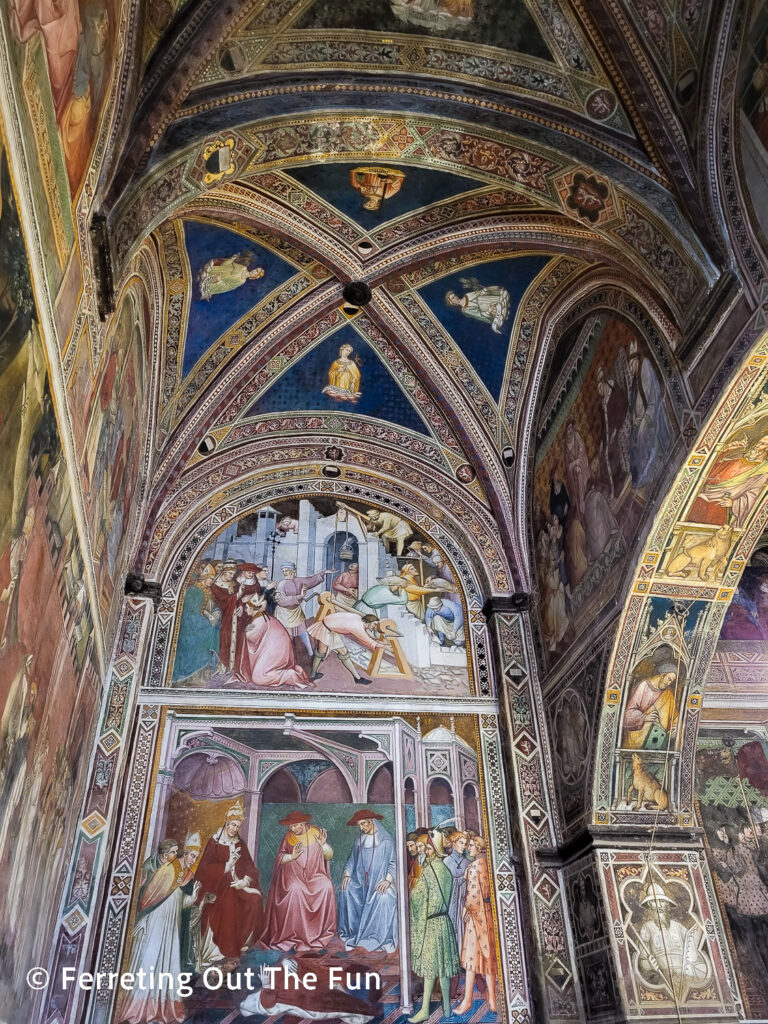
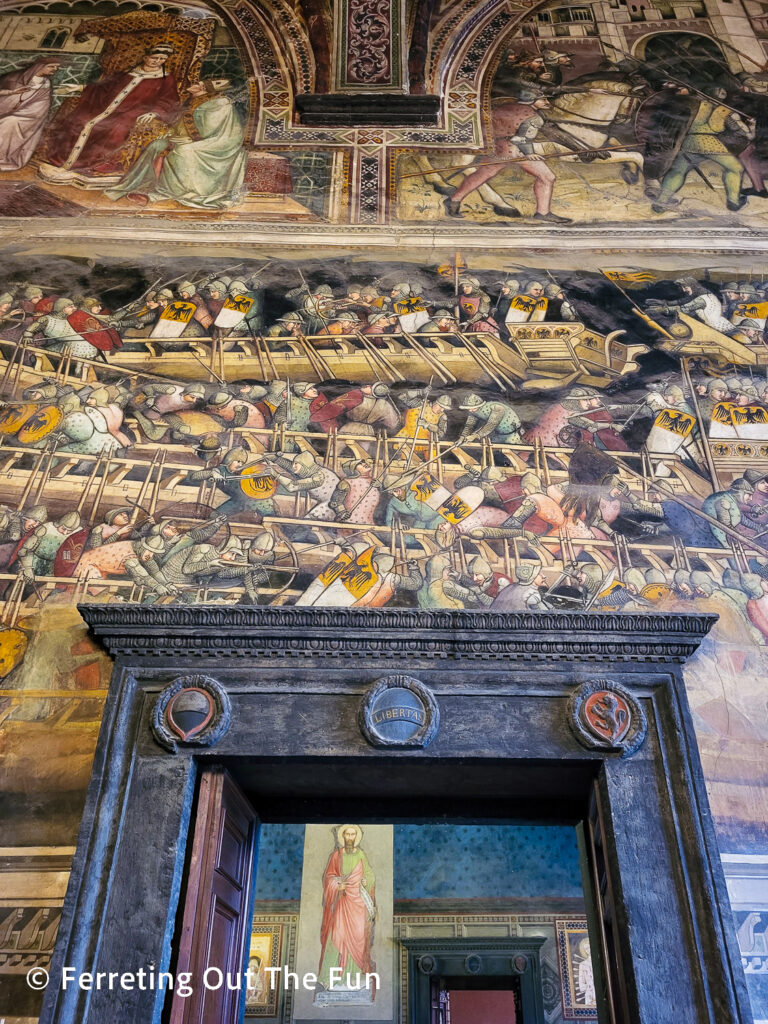
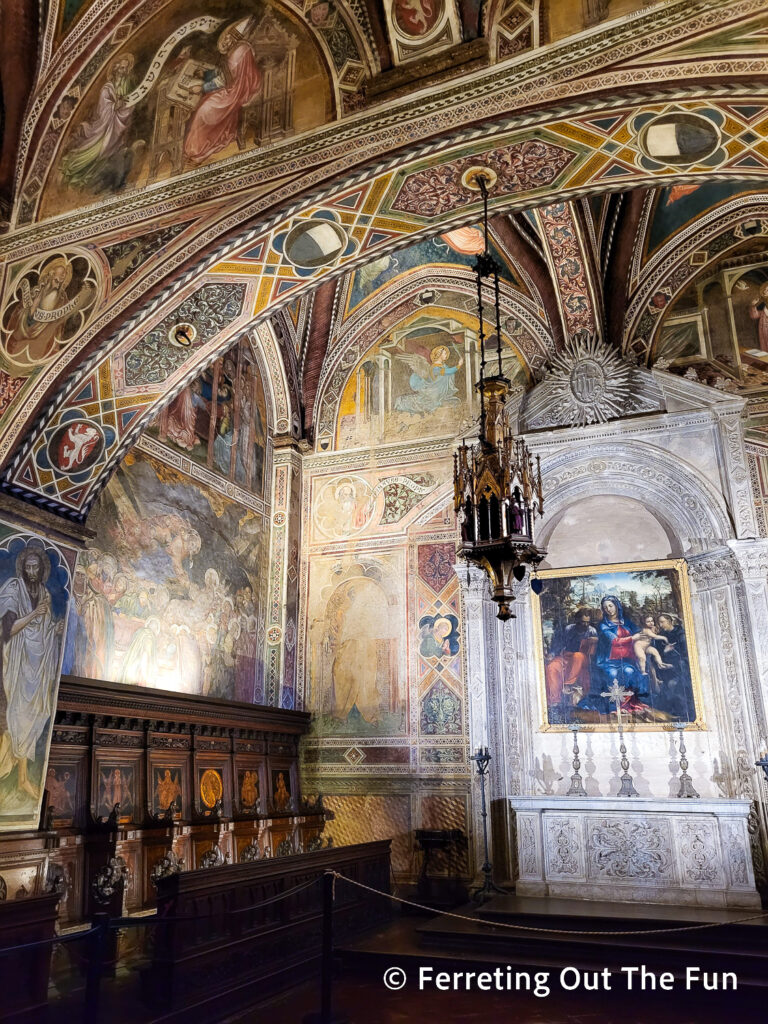
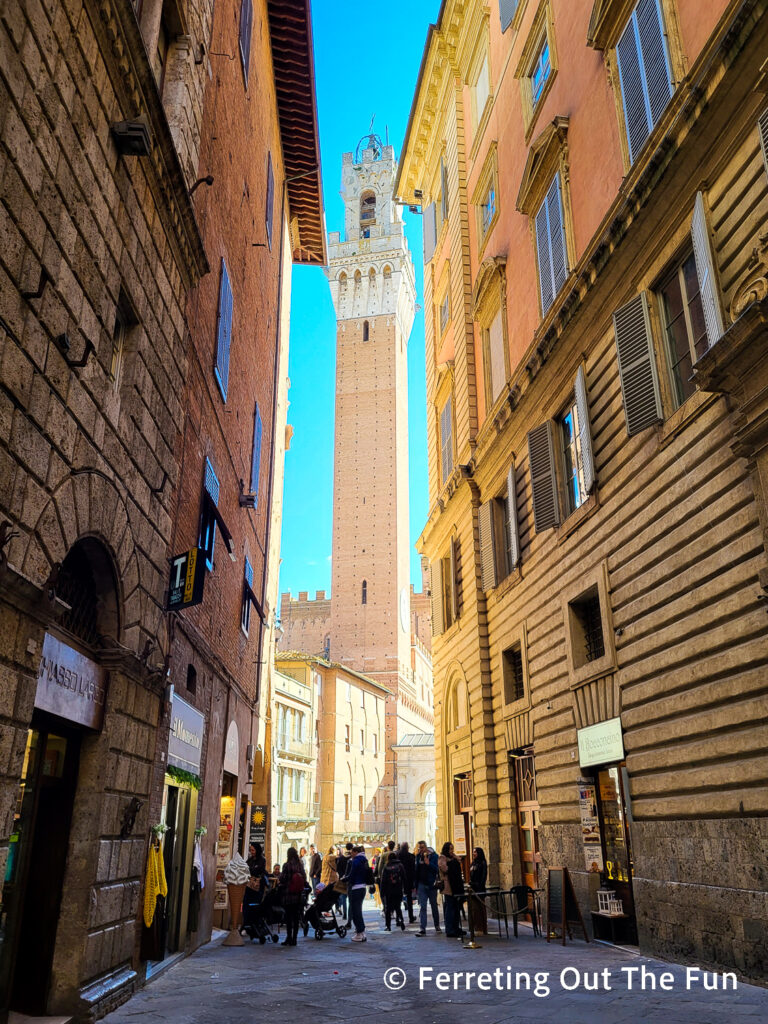
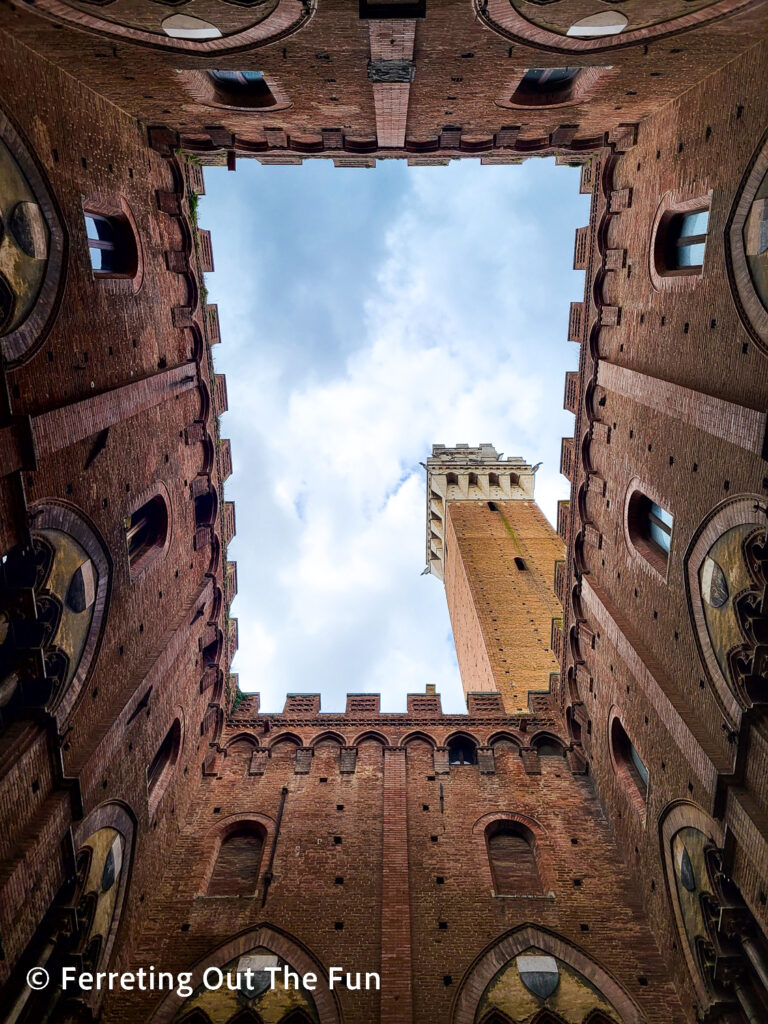
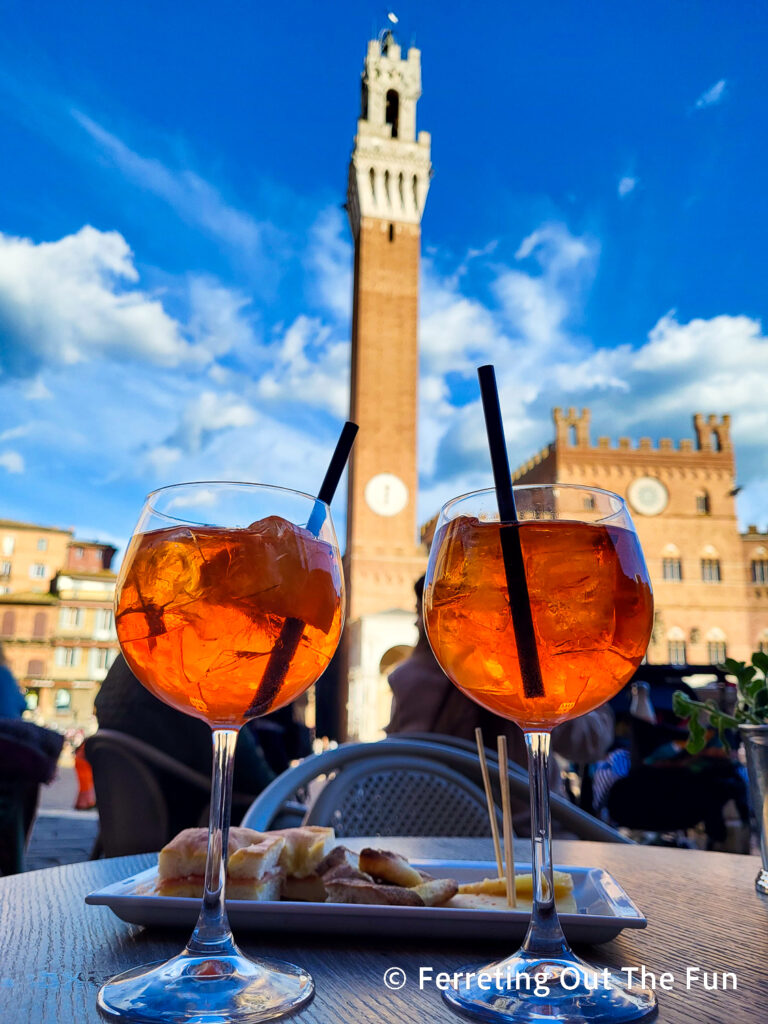
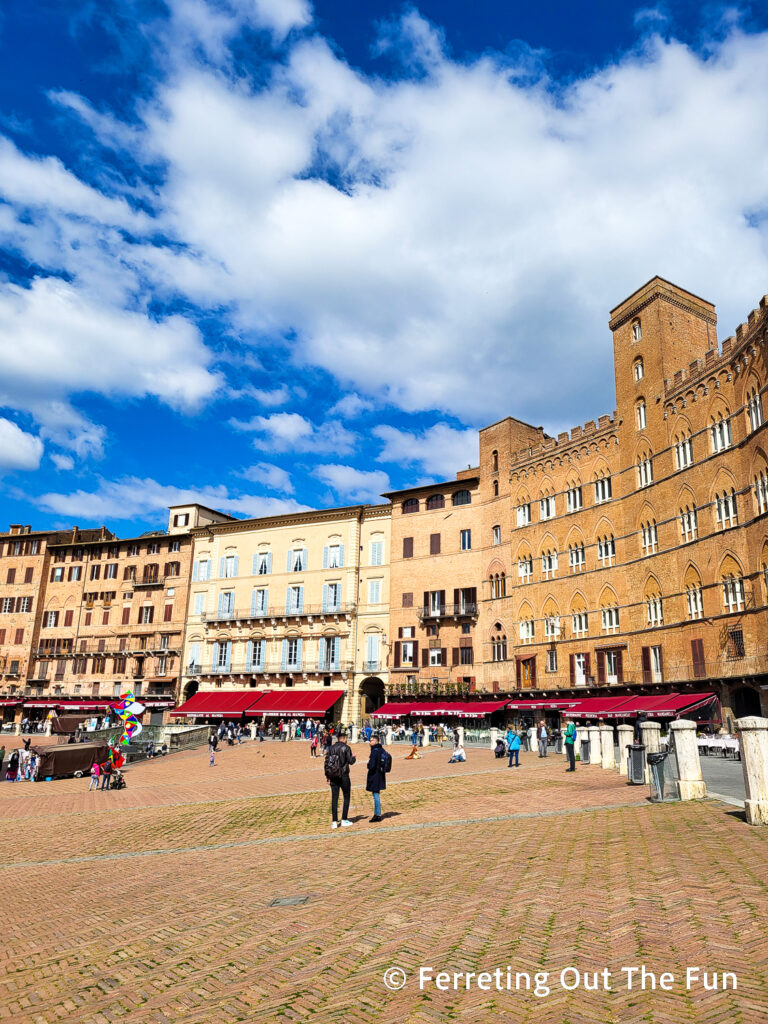
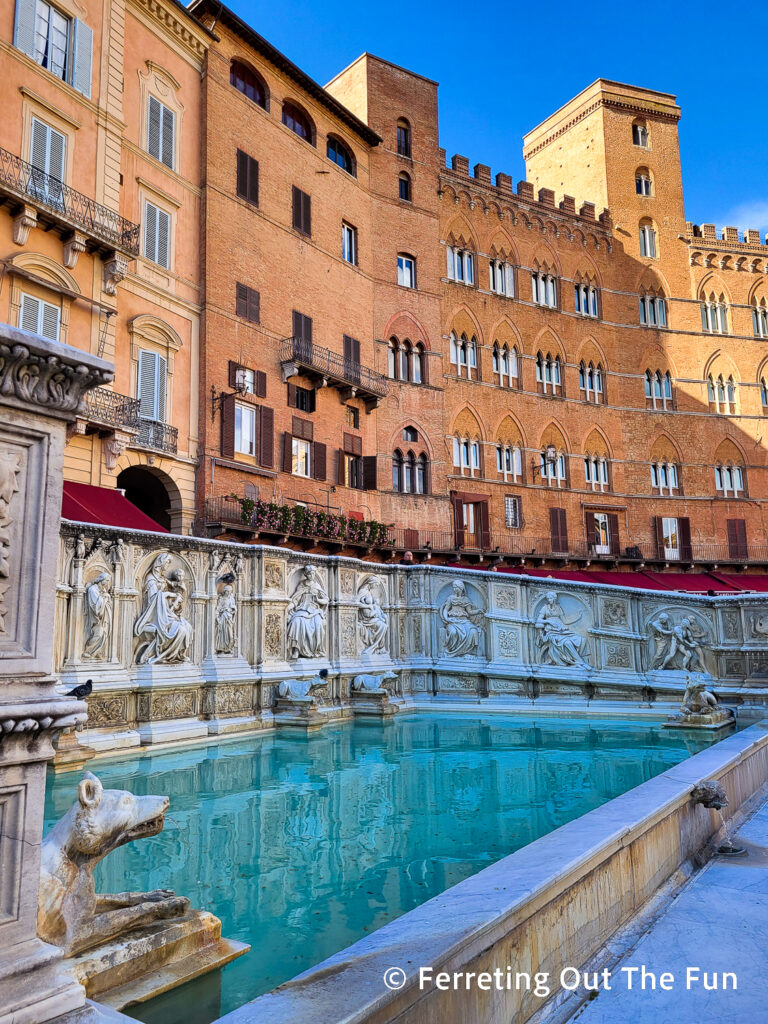
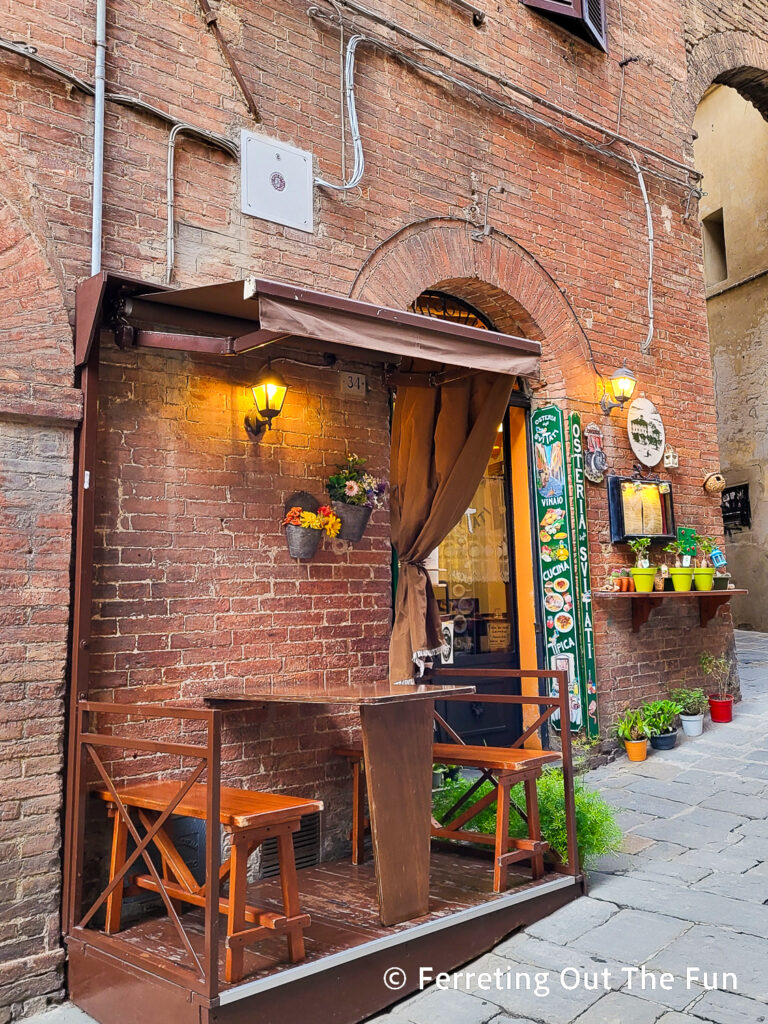
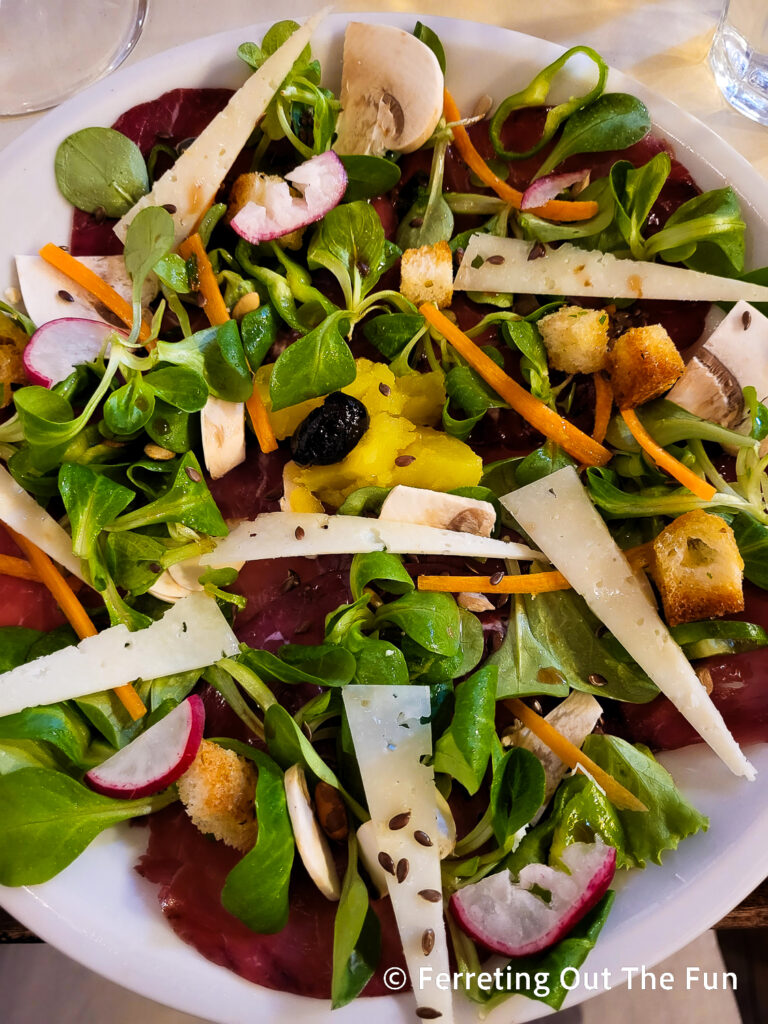
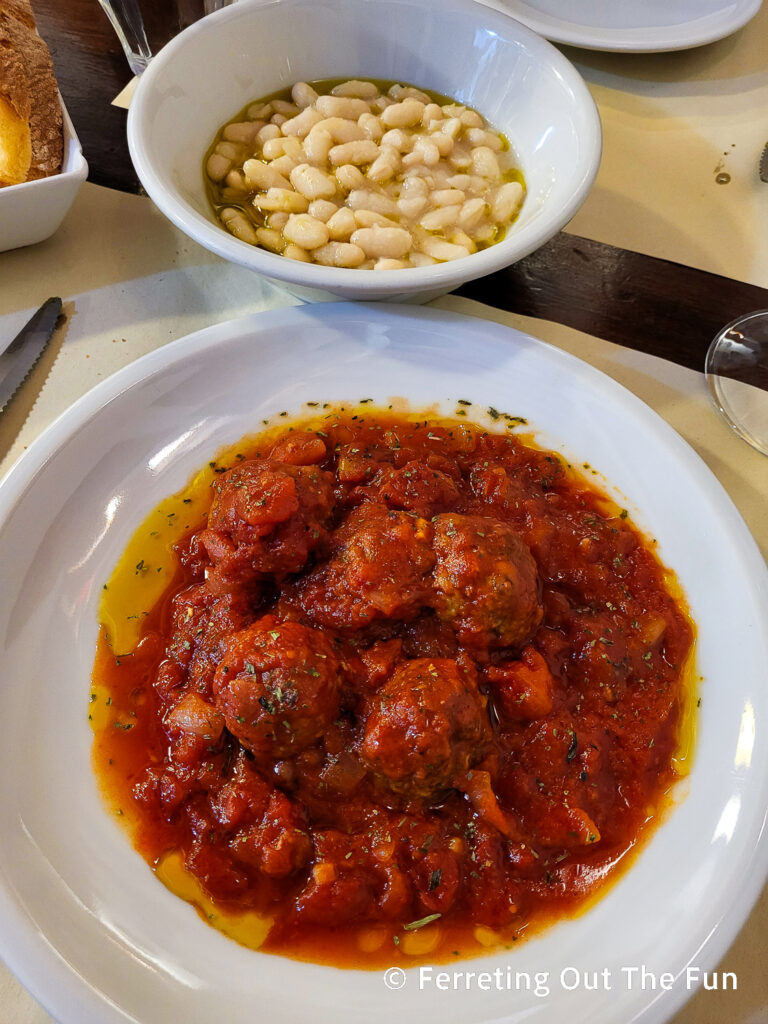
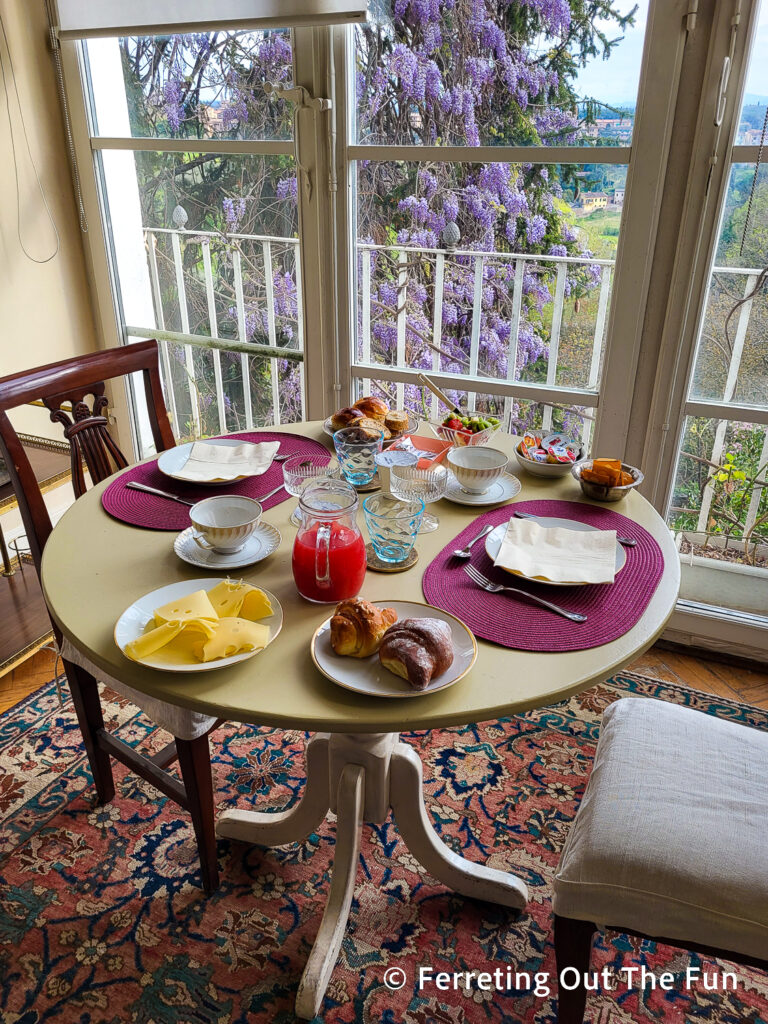
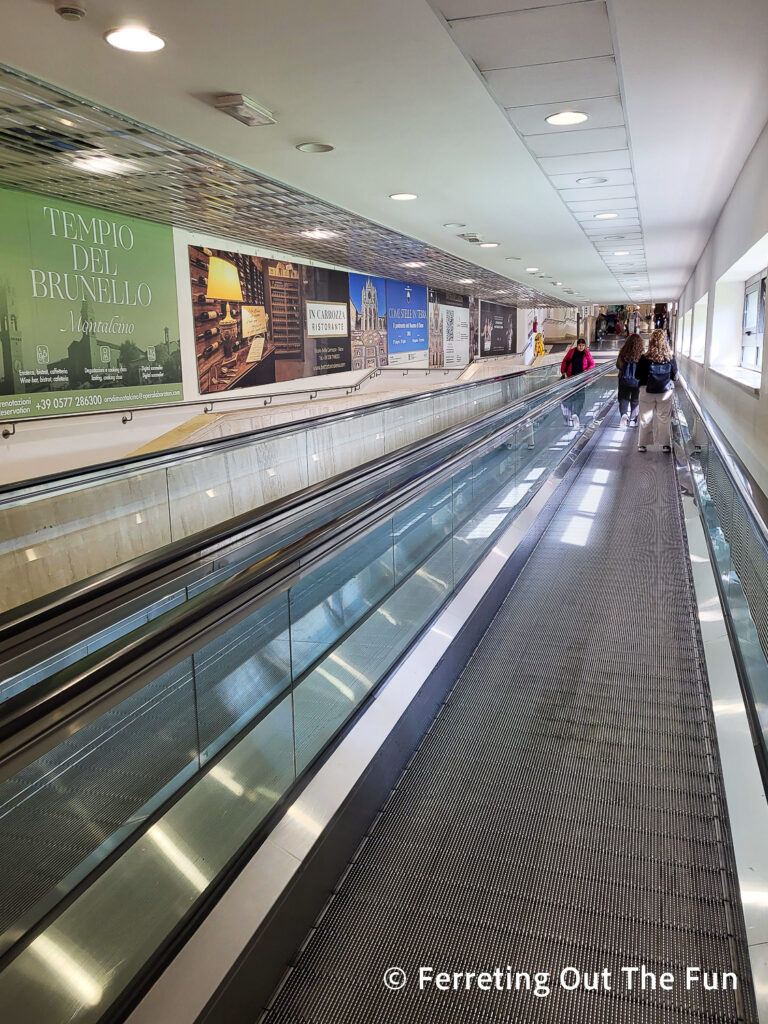
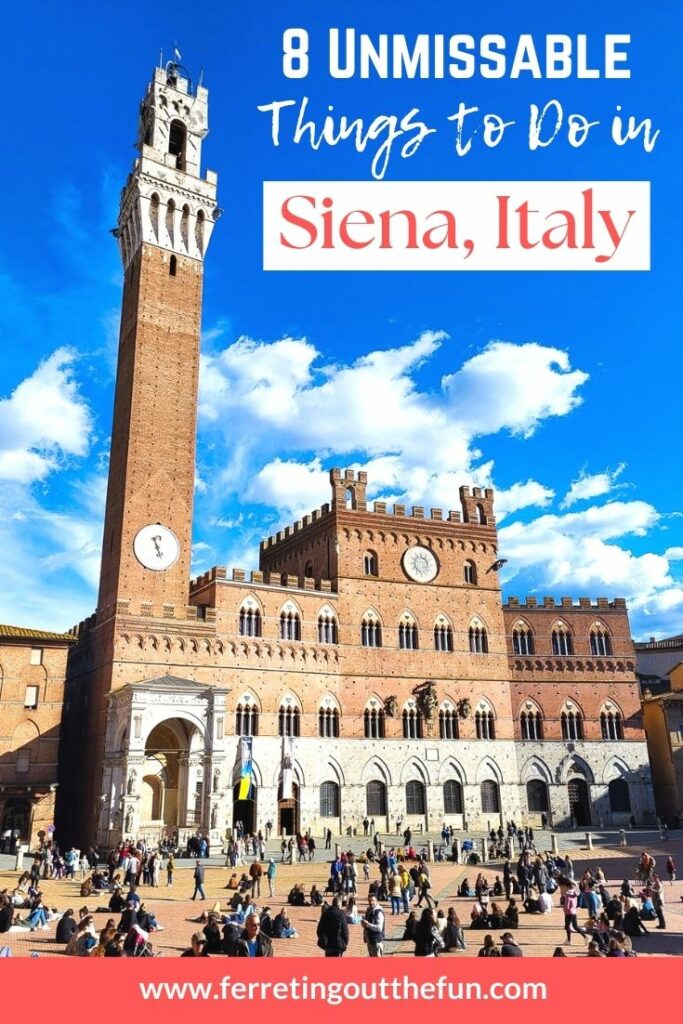
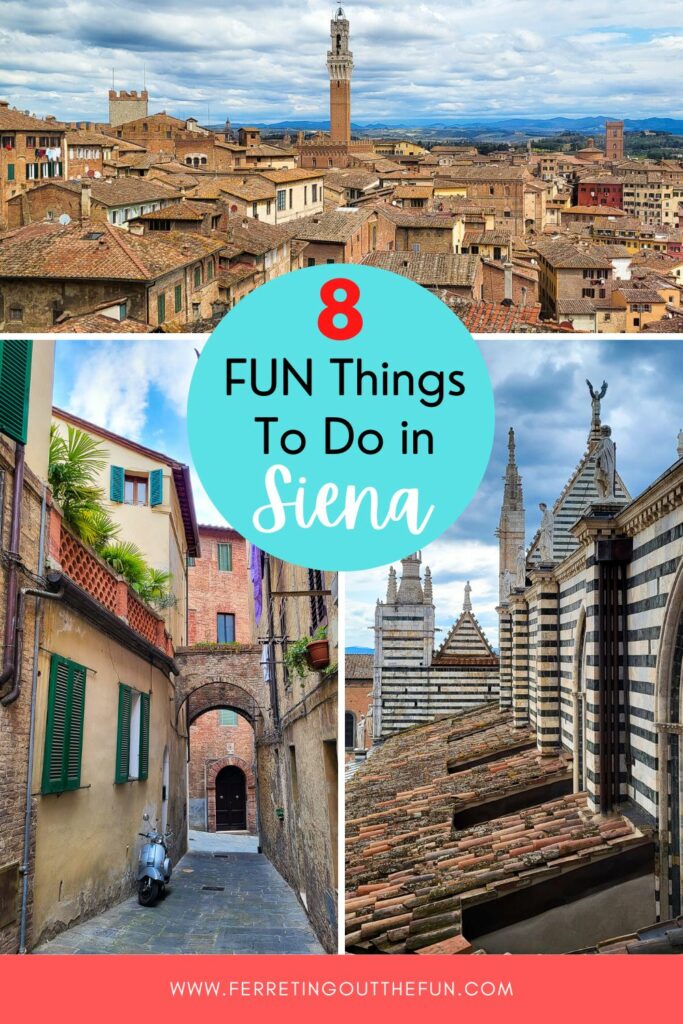
Thanks for all the pictures and commentary. I feel like I was there!! I love these old cities with their ancient architecture. It amazes me that they were able to build something so beautiful and that it’s still standing!!
Great blog!!
It really is incredible! I love Italy.